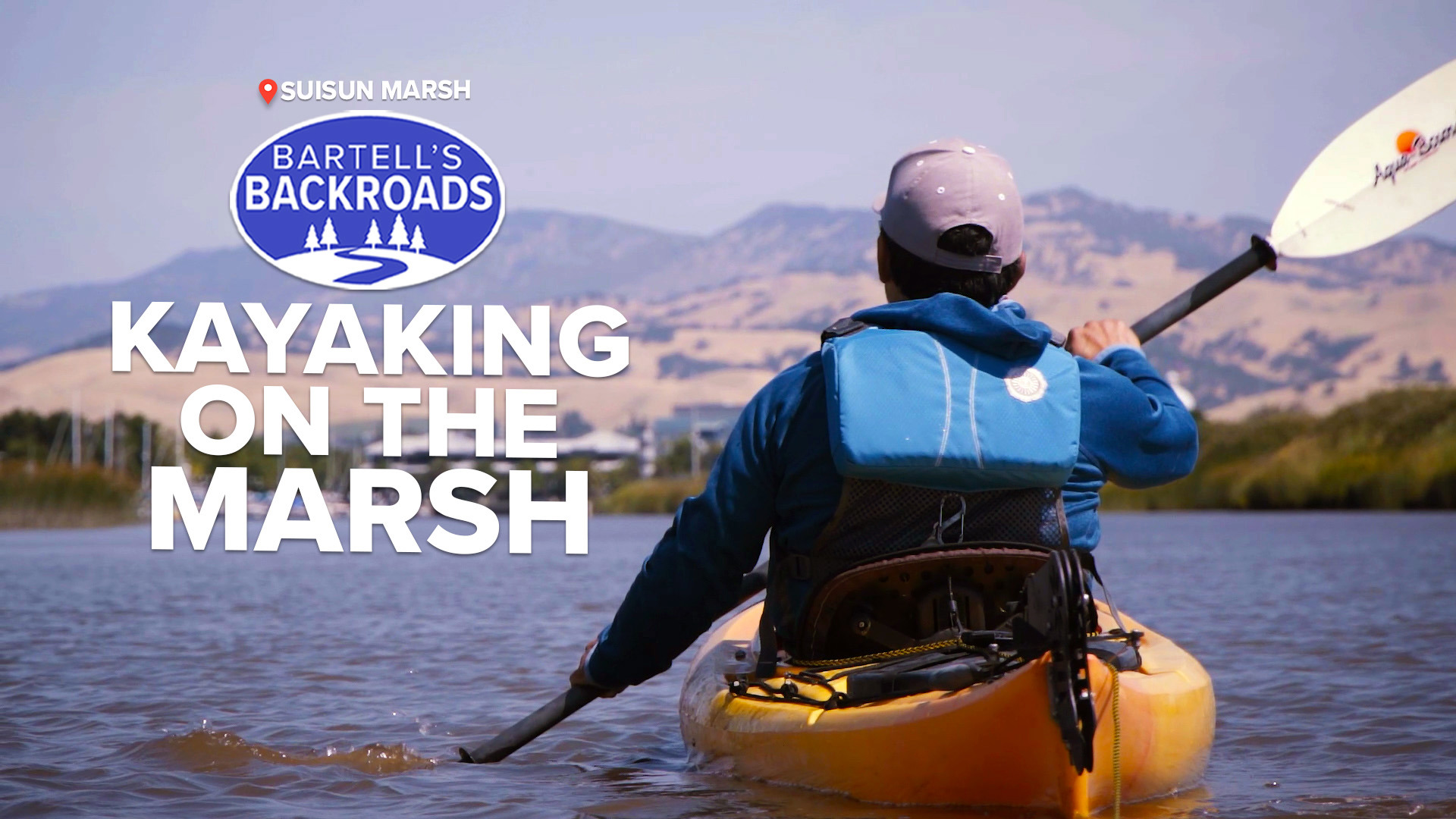SUISUN CITY, Calif. — For most people, the coffee-colored waters of the Suisun Marsh are just a body of water you pass by on the way to the Bay Area. To James Burge, the marsh is so much more.
“Water for me and I believe a lot of people, after they experience it, is calming. It's good for the soul, good for the mind, can destress and just kind of connect yourself with nature,” he said.
Burge runs Grizzly Waters Kayaking out of Suisun City, an intimate and sometimes windy tour of the largest tidal estuary west of the Mississippi.
“‘Suisun’ means ‘the west wind’ literally, so the Suisun Indians are people of the west winds,” Burge explained.
Unlike a swamp, a marsh generally doesn’t have trees to break the wind. In the case of Suisun Marsh, tule reeds are the main respite from wind.
“They're native plants to the area and they were used for everything from shelters to baskets, to even duck decoys,” said Burge.
The Suisun Marsh spans a little over 110,000 acres. The brackish water here is a mix of fresh water from the California delta colliding with the Pacific Ocean, attracting a diverse range of birds.
“We have a lot of shorebirds, egrets, herons, and at any time we have over 200 species of birds, especially the migratory season during the winter. We'll get birds from the Arctic coming down,” said Burge.
During Burge’s two-hour kayak tours, you will learn how the marsh is always changing as the tide from the ocean pushes water back and forth over higher ground in the marsh.
“So as so much water builds up here, it's got to come out and it comes out as a rapid waterfall. At high tide it does the opposite sometimes, or it's so low that the water's coming in as a rapid and waterfall is going in,” he said.
TAKE A TRIP ON BARTELL'S BACKROADS:
► See an interactive map of everywhere John has visited on the backroads
► Watch all of the Backroads videos
► Follow John on Facebook
Kayaking or boating is pretty much the only way to see these small waterfalls because the ground surrounding them is not solid. You’d get stuck in the really thick muck here.
“You don't want to be walking in it. No, you don't want to fall,” said Burge.
The thick mud is an important part of the ecosystem. Burge says this movement of water cleans impurities like mercury left over from the gold rush in the 1800s.
“The new plants - the tule and reeds, are taking hold of the soil, holding it in place, and it's filtering the contaminants and creating a good ecosystem,” said Burge.
The Suisun Marsh is on the mend right now. James says early settlers built levees around high spots on the marsh and attempted to grow crops and or create duck hunting areas.
“They thought it would be a great spot, but because of the salt water it doesn’t help crops grow,” he explained.
For decades farming and hunting land prevented natural filtration in the water, but restoration efforts are underway.
“The restoration is a process of where they're taking closed farmland or duck clubs and giving it back to nature. With that, it's being cleaned out with the tides, bringing out the nutrients and bringing in nutrients, kind of revitalizing what it used to be like here, naturally,” Burge said.
It may look like a murky body of water, but the Suisun Marsh is an important wildlife ecosystem and an unlikely playground in the Bay Area.
"I've seen wildlife from sea lions to fish jumping in people's kayak,“ said Burge. "Just endless paddling. Every time I come out here, it's a different experience."
MORE FUN ON THE WATER FROM THE BACKROADS: A balloon ride over Tahoe launched from the world's smallest aircraft carrier.

